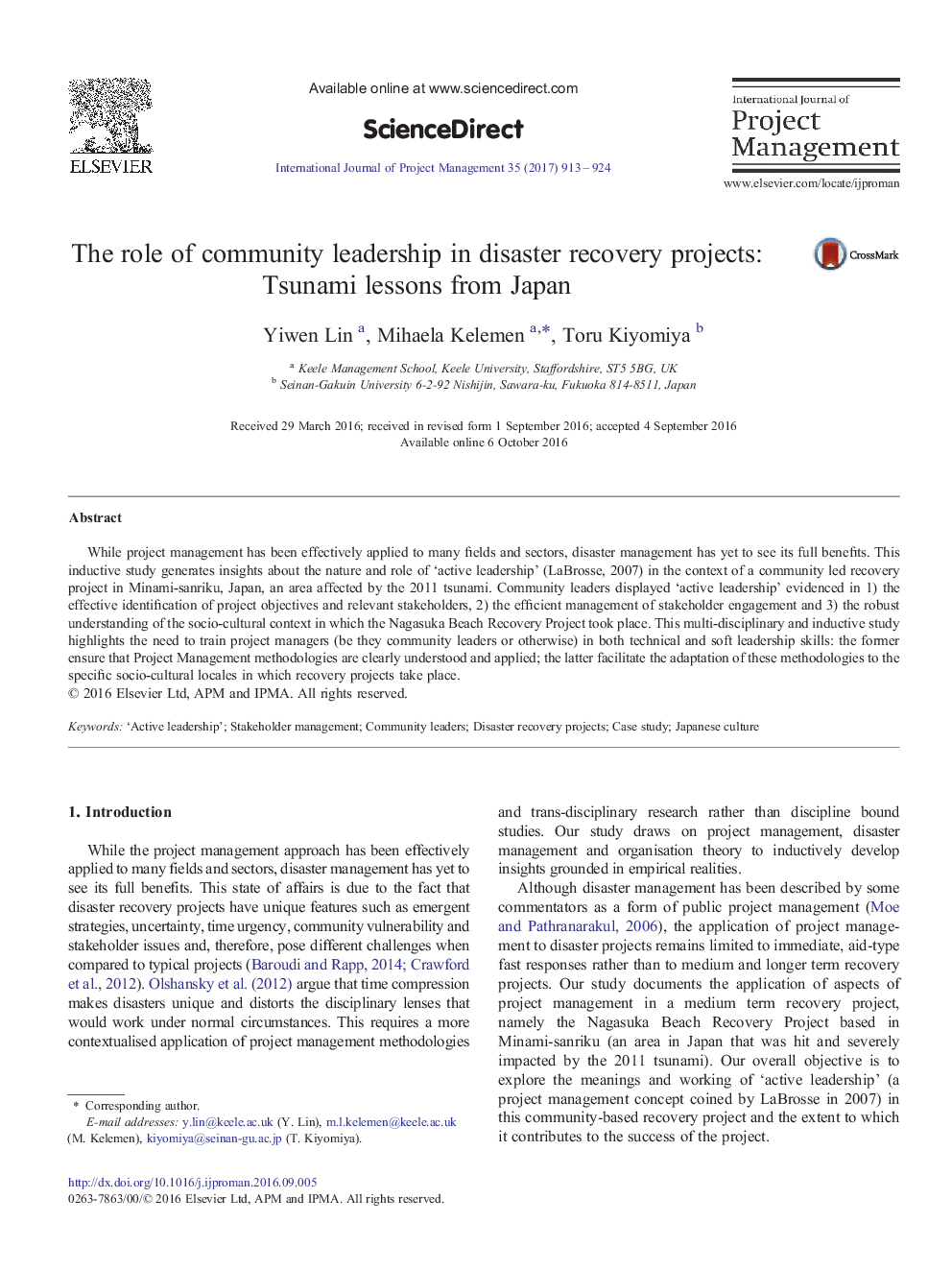| Article ID | Journal | Published Year | Pages | File Type |
|---|---|---|---|---|
| 4922229 | International Journal of Project Management | 2017 | 12 Pages |
â¢Community leaders practised 'active leadership' in the Nagasuka Beach Recovery Project.â¢Their 'active leadership' was key to managing multiple stakeholders.â¢Project management was adapted to the socio-cultural context of Minami-sanriku.â¢There was a clear link between active leadership and the success of the Recovery Project.
While project management has been effectively applied to many fields and sectors, disaster management has yet to see its full benefits. This inductive study generates insights about the nature and role of 'active leadership' (LaBrosse, 2007) in the context of a community led recovery project in Minami-sanriku, Japan, an area affected by the 2011 tsunami. Community leaders displayed 'active leadership' evidenced in 1) the effective identification of project objectives and relevant stakeholders, 2) the efficient management of stakeholder engagement and 3) the robust understanding of the socio-cultural context in which the Nagasuka Beach Recovery Project took place. This multi-disciplinary and inductive study highlights the need to train project managers (be they community leaders or otherwise) in both technical and soft leadership skills: the former ensure that Project Management methodologies are clearly understood and applied; the latter facilitate the adaptation of these methodologies to the specific socio-cultural locales in which recovery projects take place.
Graphical abstractDownload high-res image (74KB)Download full-size image
